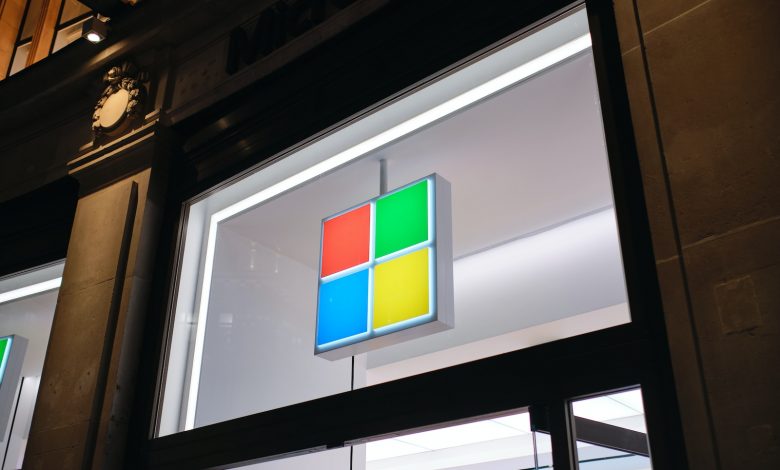
Table of Contents
Introduction
In an era of vast digital communication, protecting personal data is at the forefront of concerns for both individuals and businesses. One particular area that requires keen attention is email security, especially when it comes to Outlook users. Among the various Outlook queries, the frequent occurrence of single-use code request emails is a common one. This article delves into the key aspects of single-use code requests in Outlook and discusses the upgrades you can make to protect your account efficiently.
Overview of Single Code Request Mails in Outlook
A single-use code is an extra layer of security provided by Microsoft to safeguard your Outlook account from unauthorized access. Essentially, this code is sent to your associated mobile number whenever there is an attempt to log in to your account from an unfamiliar device or location. This serves as a verification method to ensure that the account access is legitimately by the owner. As significant as this feature is, with its repeated occurrences, it can become quite bothersome for users.
Reasons for Frequent Single Use Code Requests
Understanding why you are constantly receiving these single-use code requests can be the first step towards resolving them. In most cases, it is an indication that someone is repeatedly attempting to gain unauthorized access to your account. It's a warning sign that your account security might be compromised.
Importance of Securing the Outlook Account
Your Outlook account is a gateway to a wide range of personal and professional information. It's not just your emails that are at risk; your contact lists, calendar appointments, and even linked files on OneDrive could be vulnerable too. Ensuring stringent security steps in place is crucial.
Advanced Security Measures
There are various advanced security measures that can be adopted to enhance the protection of your Outlook account. These could include enabling two-step verification, regularly updating your passwords, and being vigilant about suspicious activities on your account. Exploring some security apps to fortify your account security could also be beneficial.
Setting Up and Using Microsoft Authenticator to Enhance Security
Microsoft Authenticator is an effective and recommended tool to ensure further protection for your Outlook account. By sending verification codes via the Authenticator application, you ensure to add an extra layer of security that can help curb the ongoing bombardment of single use code emails.
Downloading and Installing Microsoft Authenticator
Microsoft Authenticator is accessible from both the Google Play Store and the Apple App Store. Once you have downloaded and installed the app on your preferred device, you can then proceed to link it to your Outlook account. This process aids you in keeping the account secure while making it easier to verify login attempts.
Signing in to the App with a Microsoft Email Account
The next step involves signing in to the Microsoft Authenticator app using your Outlook email. Upon successfully entering your email address, the app will prompt you to enter your password. Ensure to keep your login details confidential so as not to compromise the security of your account.
Verifying Email Address with the Received Code
Once you've signed in to the Authenticator app, a verification code will be sent to your Outlook email account. Enter this code into the Authenticator app to confirm your email address. It is this verification process that further authenticates and reinforces your account's security levels.
Activating Authentication to Prevent Single Code Requests
With Microsoft Authenticator set up, you can now enable two-step verification (2FA) for your Outlook account. By activating this feature, you add an additional layer of security that necessitates the entry of a unique code, either received in the Authenticator app or via an SMS, in addition to your password whenever you attempt to sign in from a new device or browser.
Enabling Two-step Verification
Visit the Microsoft security page and access the 'Advanced security options'. From there, you will find the 'Two-step verification' option. Click on 'Set up two-step verification' and provide a phone number for Microsoft to send you verification codes. And, as already set up, you can also get these codes through your Microsoft Authenticator app. Once activated, you reduce the influx of single use code emails from Microsoft and instead verify your logins via the 2FA process.
Enabling Two-Step Verification
Two-step verification, also referred to as two-factor authentication (2FA), is an excellent method to add another layer of defense against undesired access to your Outlook account. By enabling 2FA, you can mitigate the possibility of unauthorized intrusions, consequently decreasing the frequency of single-code request emails you might be receiving. Here is a step-by-step guide on how to enable two-step verification in your Outlook account.
Accessing Account Security Dashboard
The first step to enable two-step verification is to access your account's security dashboard. You can do this by signing in to your Microsoft account and navigating to the 'Security' tab. Within this tab, you will find an option named 'Advanced Security Options'. Click on this link to access the dashboard from where you can adjust your security settings.
Bypassing Password Input Process with Authenticator
Once you are in the Advanced Security Options page, you can add the Microsoft Authenticator app as a preferred method to bypass the password input process. Once done, this means that instead of requiring a password for authentication, the service will ask for a code generated by the Authenticator app on your mobile device.
Enabling Two-Step Verification from the Security Dashboard
Next, under the 'Two-Step Verification' section, select 'Set Up Two-Step Verification'. This will prompt a new page detailing the steps required. Typically, you will need to add a phone number where Microsoft can send verification codes via text messages. Be sure to select a phone number that you have easy access to for future verification processes.
Proceeding Through the Security Process to Finalize Settings
Once you have added a phone number and set up your authenticator app, you can proceed through the security process. This involves Microsoft sending you a test verification code to check if the setup works correctly. Enter the code you receive to verify and finalize your two-step verification settings. From this point forward, each time you log in to your account from a new device or browser, you will need to authenticate via the code sent to your phone or generated by the Authenticator app in addition to entering your password.
This process helps in significantly reducing the frequency of single use code emails, as your account now has an extra layer of security. Remember, enabling two-step verification may slightly change your sign-in process, but it's a small trade-off for improved account security.
Checking Recent Activity to Detect Possible Breaches
Keeping a vigilant check on your account's recent activity is an effective practice to detect possible security breaches. It provides insight into which devices and browsers have accessed your account recently and may help you identify any suspicious activities. Here's how you can do it:
Visiting the Activity Section in a Web Browser
The first step to monitor your account activity is to visit the 'Activity' section of your account. Open a web browser and go to the account activity page at "https://account.live.com/Activity". This website provides a detailed log of all recent activities related to your Microsoft account, which includes your Outlook.com email account.
Logging In to Track Attempts
Upon reaching the said URL, you would need to sign into your Microsoft account. Once you have successfully logged in, you will be taken directly to the account's activity history. Here, you will see a list of sign-in attempts along with details such as the time of the attempt, the device used, and the location of the access point.
Understanding the Origin of Attempts through the Detailed Activity List
On the activity page, each entry has a ‘See Details’ link. Clicking on this link will provide a more in-depth view of the attempt, including the IP Address from where the sign-in attempt was made. This detail can significantly inform you to understand the origin of suspicious attempts, aiding you to act accordingly.
Reporting Potential Security Breaches or Changing the Account Password When Necessary
If during your inspection of your account activities you notice unfamiliar or unexpected sign-in attempts (especially from unknown locations), it could signal a potential security breach. It is crucial to immediately address this issue either by reporting it to Microsoft or by updating your password without delay.
Steps to Take in Case of Potential Breaches
First, change your account password immediately. Besides, make sure you enable all the available security measures such as two-step verification and Microsoft Authenticator usage, as discussed in the earlier sections. Furthermore, reporting the suspicious activities to Microsoft's customer support can evoke immediate actions to fortify your account security ensuring robust protection.




